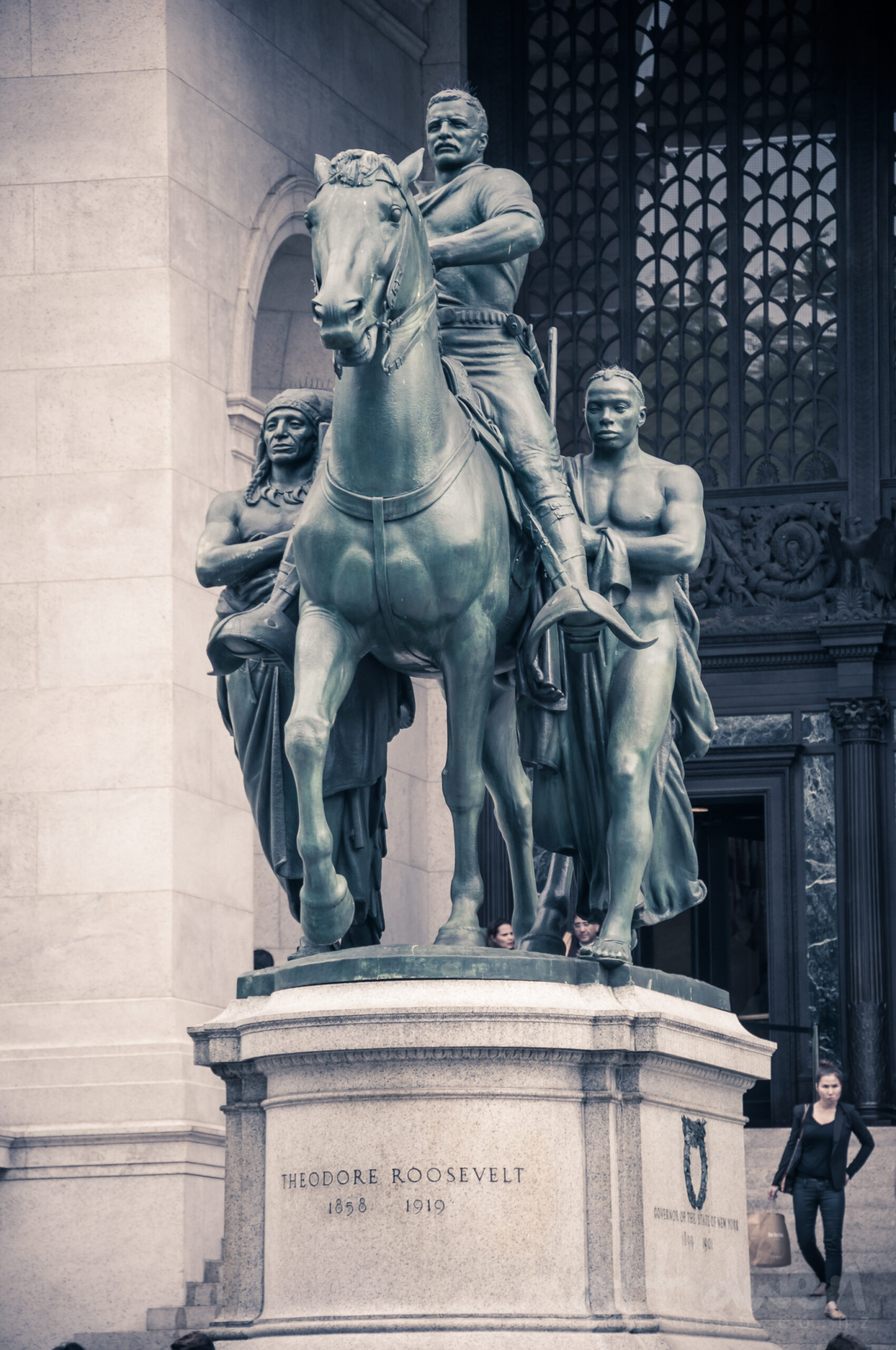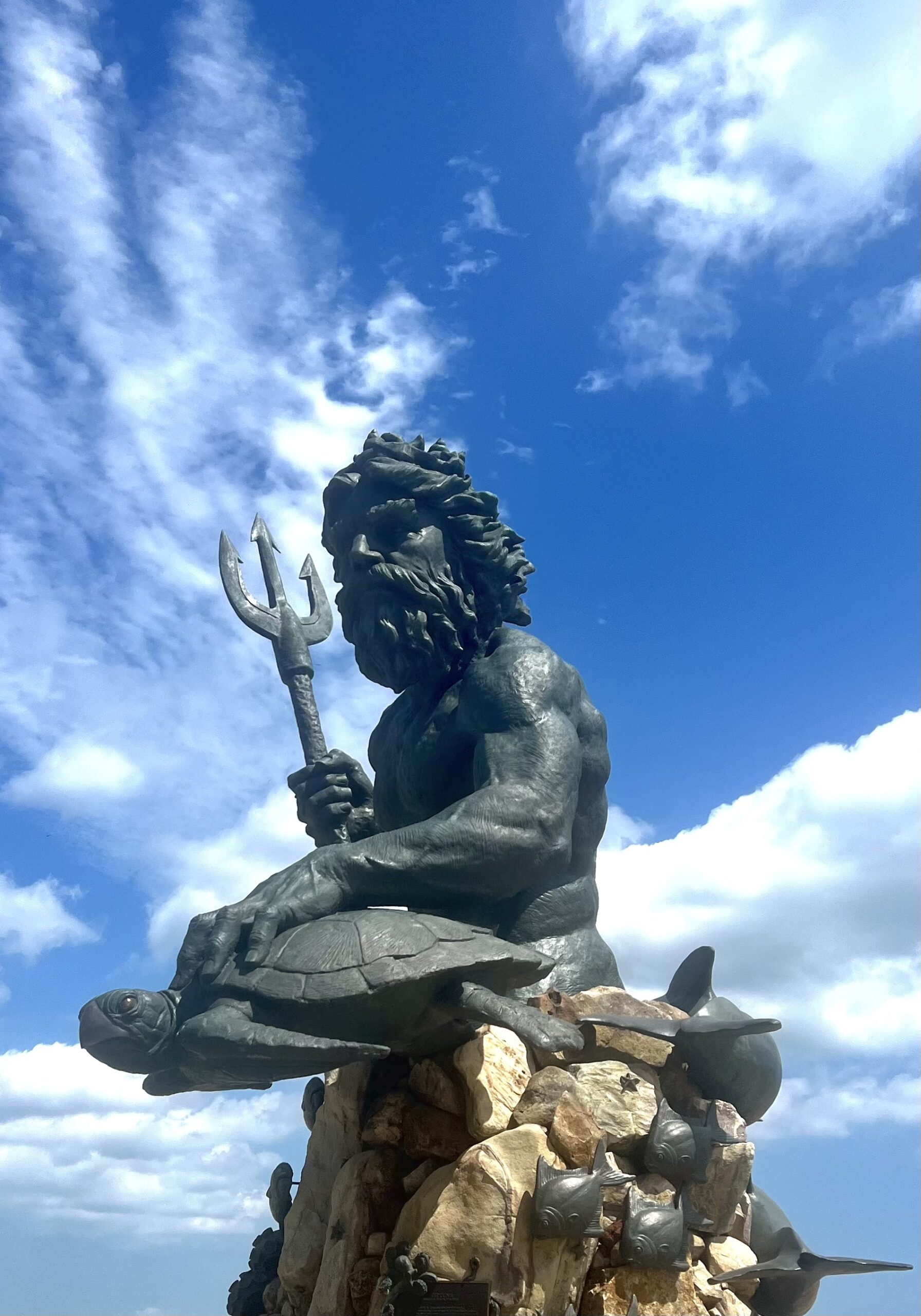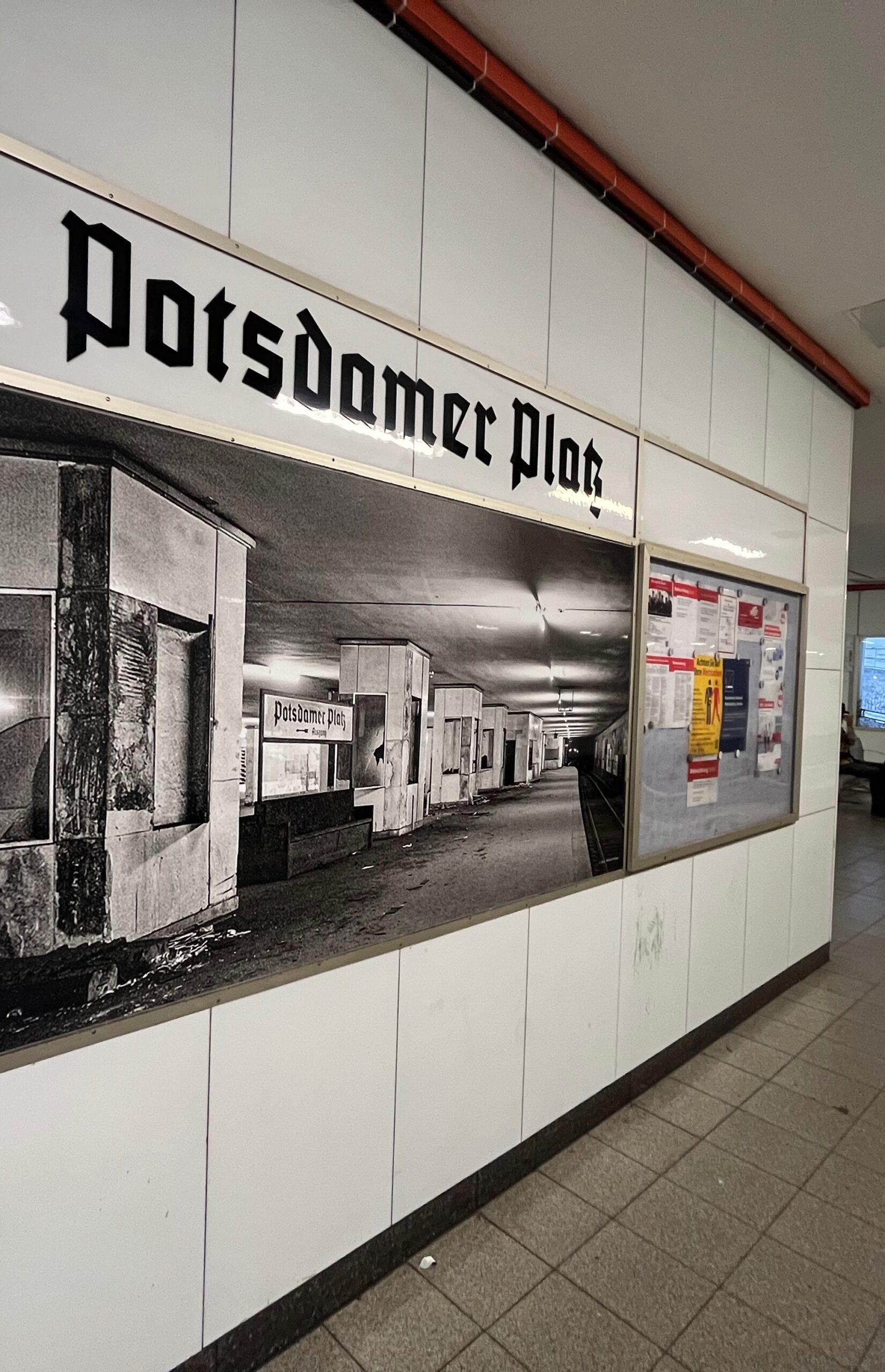
The Upper West Side, Manhattan, New York
On a crisp fall day in 1974, you are walking with your third-grade class up Central Park West to the museum. You smell the hot pretzels just before the statue comes into view. You want to pass by quickly in an effort to avoid the poop from flocking pigeons, but your best friend and partner for the trip, who is white and blond, slows your pace and squeezes your hand. She is frowning up at the statue, red-cheeked, the way she gets when she is angry.
“How come the Black man and the Indian man don’t get horses too? They’re just as good as the white guy.”
As a little Black girl, you have not asked this question. The thing you think most about this statue outside the American Museum of Natural History is that there are never fewer than three pigeons roosting on it. There is always one on the highest spot: atop Theodore Roosevelt’s broad head. You know Theodore Roosevelt’s name because he was once president, but also because his great-grandson was in your prekindergarten class. The horse is what makes Teddy Roosevelt’s head best for pigeons, higher than the heads of the men on either side of him: the Black man and the Indian man, whom you would have barely noticed if not for your friend.
This statue of an important man—with a name, in a shirt, on a horse, flanked by two nameless men without shirts or horses—is part of your world, just like the number 10 bus and hot pretzels and Central Park. You have been visiting this museum on Central Park West about once a week for as long as you can remember. You come with your mother, sometimes joined by your mother’s friends and their children. Each time, the statue greets you and you do not analyze it. You do not wonder who the Indian and Black men are. You do not wonder why their eyes are downcast. The only thing you contemplate as you approach the monument is: how many pigeons? Three? Seven? Dozens?
Your father does not join these excursions, mostly because they take place after school on weekdays when he is still at work. It is also because your father is more interested in art history than natural history. He takes you to exhibits at the Whitney and MoMA. He takes you to art galleries to see works by Romare Beardon and Charles White and Ernest Crichlow and Elizabeth Catlett and other Black artists who were his friends. You know that Black people are important to him and to your mother as well, even though she is white and had to learn about Black people, Black art, Black history, and also racism from your father.
Your father talks to you about racism in terms that are more abstract than personal. He mentions disenfranchisement, Jim Crow, redlining, and the Mason-Dixon line. He mentions discriminatory hiring practices. He also takes you to visit his office in a tall, big building on Madison Avenue, full of men in suits with pretty, long haired secretaries. You observe that your father is the only Black man in a suit with a secretary. Because of your father, no one can ask why Black men don’t get suits and secretaries. No one, as far as you can see, discriminated against your father when it came to hiring. You don’t ask about this any more than you ask about the Black and Indian men in Teddy Roosevelt’s statue.
You don’t know what to think about being Black yourself. Your parents both say that the world sees you as Black, even though you are half white. Because there is no extended family around—either Black or white—you have only your father to show you what being Black means. And he works in an office where everyone else in a suit is white. The friends and colleagues he brings home for dinner are white. And of course his wife is white, though you don’t think of your mother as anything but your mother.
There are things you work out on your own because you cannot shape the words into questions. There are things you do not want to know, like if anyone will ever be racist against you. You promise yourself that you will not let that happen. You decide to always be nice and funny and cooperative. You believe that you can control white people in this way, or at least control the Black inside you so that it will not offend them.
To the child that you are—brown, with fuzzy puffs of hair that your mother does not understand and so leaves mostly alone—this feels easy to do. What you don’t see is that outfoxing racism is only effortless while you are holding your white mother’s hand.
You and your mother usually walk to the museum, but when it rains, you take the number 10 bus. You believe you know every brick and tile of the place: the giant canoe, the herd of elephants frozen in mid-stampede, the wildebeests, and the blue whale which is suspended from the ceiling.
You know the American Indians in their glass case, wearing feathers and loincloths, facing white men in heavy clothes. You know the African herders in their own enclosures, with bald heads and bare feet and mostly naked bodies. You don’t know that these images are why your father stays away. To you, the museum is an extension of home. Visiting with your class feels strange, as if you are sharing your private life with the public.
So on this class trip, when your friend goes red in the cheeks, squeezing your hand, demanding why the Black man and the Indian man don’t get horses, you stare at her uncomprehending for a minute. Then you feel ashamed that, in all the years you have been counting pigeons, you have barely taken note of the Indian and Black men. You did not consider what a Black man or an Indian man deserves. To be fair, the statue is bronze, which means that the three men appear to be the same color. But you know the name of only one. Theodore Roosevelt, of the head so prized by pigeons.
You are momentarily angry with your best friend for noticing what you did not notice, or did not want to notice. You are angry with yourself. Because maybe you did notice. But you were unable to feel angry because the statue was so towering that it showed you in many more ways than words: the Black man and the Indian man were not “just as good.”
More than anything else, you are angry with the Indian man and especially the Black man for not having names—or shirts or horses. You are furious with the Black man for failing to get himself a horse, because he—not Theodore Roosevelt—is your ancestor. The Black man should have known that every week, you would pass by and see him, horseless, shirtless, and that every week, you’d think less of yourself. It does not occur to you to be angry with Theodore Roosevelt.
Years from this day you will have cause to rethink the statue and others like it. By this time, you will understand the history of names and shirts and horses. You will have learned the meaning of terms like colonization, representation, and Indigenous. You will know that Indigenous and Black people did not willingly relinquish their rights or dignity but were violently robbed of them. You will recognize this statue for what it is: a celebration of white supremacy. Which has been standing contentedly in its spot in front of your museum, in the center of your childhood, from the beginning of time as you know it.
You will read an article in June of 2020 about how the statue is finally being challenged, about how it will finally come down, along with other racist monuments all over the country. You will smile, thinking, good riddance. Then you will imagine taking a future grandchild to this same museum one day. There will be no more statue to make her feel small, no statue whose subtle poison she might internalize each week, whose toxicity might take years to purge.
One day, your grandchild will pass through the pillars at the museum entrance free and empowered. She will thrill at the sight of the Barosaurus in the lobby. She will greet its soaring neck with her own head high.
Lisa Williamson Rosenberg is a writer and psychotherapist specializing in multiracial identity. She is also a former ballet dancer, with essays and stories published in Longreads, Narrative.ly, Mamalode, Grok Nation, and The Piltdown Review. She is working on a novel about an Underground Railroad safehouse turned 21st century Airbnb. A native New Yorker, Lisa now lives in Montclair, New Jersey.
Photo courtesy of Flickr Creative Commons user mattdwen.




